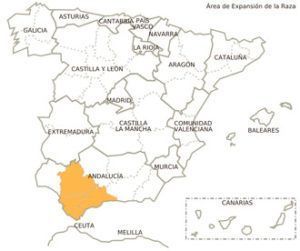GENERAL CHARACTERISTICS
They are very tall and long animals, reflecting the selection made by breeders in search of an animal format that would allow them to make use of grazing land in areas of difficult access in the mountains. As stated in the Breed’s Racial Pattern, these animals have a subconvex, hypermetric profile and long-limbed proportions. Selection for dairy aptitude may have been the basis for the little morphostructural variation observed. They show marked sexual dimorphism.
The weight of the animals ranges from 50 to 60 kg for females and 70 to 90 kg for males. An identifying criterion of the breed is the great variety of existing coats, with uniform compound coats (snowy and brown), discontinuous compound coats (berrendas, oritas, sesnegras, collalbas and berries) and single coats (red, black, blond and white).
PRODUCTION CHARACTERISTICS AND EXPLOITATION SYSTEMS
The Payoya goat breed follows a semi-extensive farming system, where grazing resources provide the most important part of the diet. The goats make use of spontaneous grazing, stubble and fields sown for consumption by the goats, especially in spring, when the environment offers the most food resources to the livestock. The predominant type of exploitation is the family farm. In terms of farm size, the average number of animals is around 330 females and 17 males.
The main objective of the Payoya goat farm is milk production. It should be noted that the average production per goat in natural lactation (219 days on average) is 440 kg, at a rate of 2.09 kg/day. Some animals produce well over 550 litres on average per lactation. The chemical composition of their milk is estimated to be: Fat=4.20%; Protein= 3.50%; Lactose= 4.62%; Dry Extract= 13.23%. Most of the milk is used to make cheese. The Protected Designation of Origin (PDO) for ‘ Goat’s Cheese Sierra de Cádiz y Serranía de Ronda’ is currently being processed in order to protect and promote a very important livestock, agri-food, social and economic heritage in the region.
GEOGRAPHICAL DISTRIBUTION
The Payoya goat is a native Andalusian breed, classified as in danger of extinction, which has traditionally been exploited in the area of what is now the Sierra de Grazalema and Sierra de Ronda Natural Park, areas of great natural value, providing a livelihood for many families in the region.

INFORMATION
 Tell us about your characteristics and needs so that we can offer you the solution that best suits your context. Contact us if you have any clarifications or suggestions for products or services that you need.
Tell us about your characteristics and needs so that we can offer you the solution that best suits your context. Contact us if you have any clarifications or suggestions for products or services that you need.
Presupuesto total: 543.404,60 euros. Cofinanciado UE al 80% por el Fondo Europeo Agrícola de Desarrollo Rural- FEADER y al 20% por el MAPA. La Dirección General de Desarrollo Rural, Innovación y Formación Agroalimetnaria (DGDRIFA) es la autoridad de gestión encargada de la aplicación de la ayuda FEADER y nacional correspondiente.
https://ec.europa.eu/info/eu-
Creación de una base y estructura de comercialización e internacionalización de material genético de razas puras españolas mediante análisis de la situación actual y elaboración de plan estratégico para la exportación. El objetivo es desarrollar un análisis estratégico de la internacionalización y desarrollo de estructura y protocolos de comercialización del material genético según demanda y requisitos de países objetivos para las razas participantes del proyecto y para el conjunto de la cabaña ganadera España. Organismo responsable de contenido: miembros del GO EXPORTGEN.
 Tell us about your characteristics and needs so that we can offer you the solution that best suits your context. Contact us if you have any clarifications or suggestions for products or services that you need.
Tell us about your characteristics and needs so that we can offer you the solution that best suits your context. Contact us if you have any clarifications or suggestions for products or services that you need.
Presupuesto total: 543.404,60 euros. Cofinanciado UE al 80% por el Fondo Europeo Agrícola de Desarrollo Rural- FEADER y al 20% por el MAPA. La Dirección General de Desarrollo Rural, Innovación y Formación Agroalimetnaria (DGDRIFA) es la autoridad de gestión encargada de la aplicación de la ayuda FEADER y nacional correspondiente.
https://ec.europa.eu/info/eu-
Creación de una base y estructura de comercialización e internacionalización de material genético de razas puras españolas mediante análisis de la situación actual y elaboración de plan estratégico para la exportación. El objetivo es desarrollar un análisis estratégico de la internacionalización y desarrollo de estructura y protocolos de comercialización del material genético según demanda y requisitos de países objetivos para las razas participantes del proyecto y para el conjunto de la cabaña ganadera España. Organismo responsable de contenido: miembros del GO EXPORTGEN.










